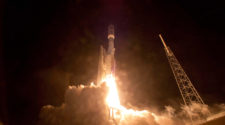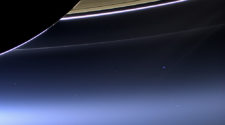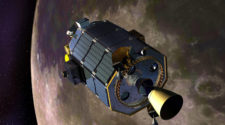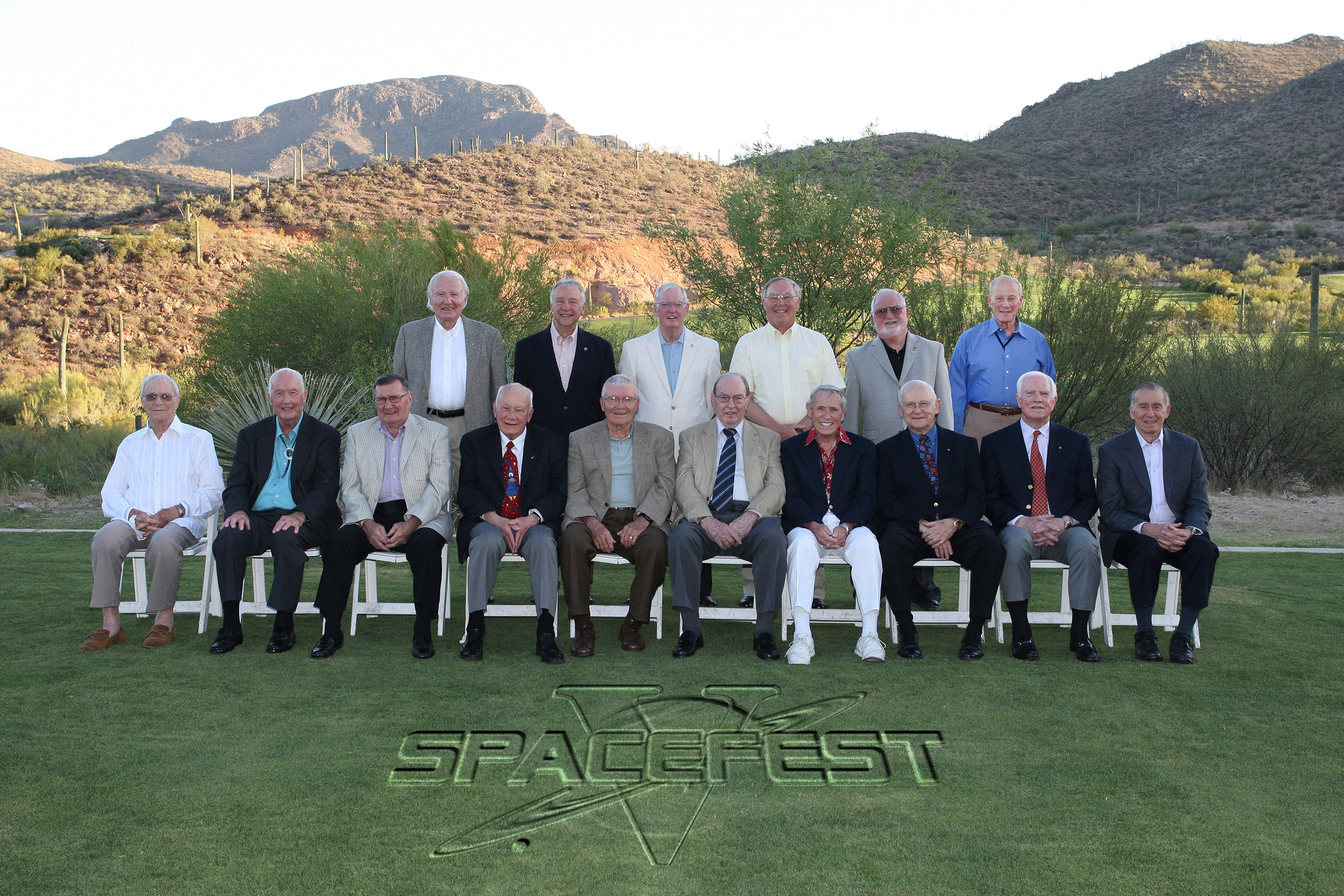
Recollections of Spacefest V
“The past is prologue” as I once heard. A once politicised and technology based race to the Moon has yielded innumerable spin-off benefits and technology, but has also served as a prologue to many other events. The birth and rise of the new commercial space industry. International Space Agency cooperation with the construction of the International Space Station. The rising star of the Chinese ambitions to have a presence in orbit and on the Moon. And the benefits of a higher quality life in many ways. I was reminded of all these events in late May when I attended Spacefest V.
Spacefest is THE convention to go to for any “pure stripe, dyed in the wool space enthusiast, astronomy buff” and pretty much anyone who is enthusiastic about space history, exploration and STEM (Science, Technology, Engineering and Maths). There have been 4 of these events held which have attracted luminaries from the world of science, technology, astronomy and astronautics including some of the legendary Apollo astronauts
Organised by the wonderful Kim and Sally Poor of Novaspace, Spacefest V was held in the tranquil Marriott Starr Pass Resort and Spa in Tucson, Arizona. Known as an astronomy town, there are many side tours to sites of interest such as Kitt Peak Observatory, Pima Air and Space Museum and Biosphere II. The convention itself was held over the 3 day Memorial Day weekend and brought together not only many famous luminaries but a very special group of virtual Facebook friends with whom I had become acquainted over the previous months during planning for this little trip.
The Spacefest V weekend itself opened with a refined VIP reception on Thursday 23rd May, mixing with all the attendees, and old and new friends. Meeting one of the Meteorite Men himself, Geoff Notkin was a joy and a thrill to see an ex-pat Brit pursuing his life’s dream in Arizona so successfully. If you haven’t already seen his excellent series on the Discovery Channel “Meteorite Men” do check it out. Geoff was welcoming and fun straight off the bat, eager and curious to know, answering every question with humour and detail. A pure delight and a very British gentleman like this author.
Entry to view a very special art exhibition was given to appreciate the beautiful and extraordinary space art of such celebrated artists as Lucy West-Binnall, Kim Poor, Pamela Lee and Apollo XII astronaut Alan Bean who is himself a very accomplished artist.
Then came an unexpected surprise; meeting Carolyn Porco, leader of the imaging science team for the Cassini Mission; its namesake probe currently in orbit around Saturn and investigating the Saturnian moons Enceladus and Titan. As a young scientist she also worked with another childhood hero, Carl Sagan on the Voyager missions. She was very keen to get to know our little international army who had travelled so far to come to this event. So much so she even tweeted about us!
Spacefest V: Day 1
The first proper full day on Friday brought a series of highly informative talks from scientists, astronomers and Apollo alumni. A separate dealer hall ran parallel to the talks housing art memorabilia, books and meteorites for sale as well as an opportunity to meet the legends of the Apollo era. Updates on Project DAWN to asteroids Vesta and Ceres and New Horizons to Pluto were given by Marc Rayman and Leslie Young respectively. Both were highly informative and intriguing. The legendary Sy Liebergot gave the crowd an unparalleled view into the inside workings of NASA Mission Control in the 60s during Apollo’s heyday and especially around the mission he was most instrumental in saving; Apollo XIII. As he succinctly put it, it took eight years to make the bomb that blew a hole in the side of Apollo XIII’s service module and almost cost the lives of three good men. However it was, as we all have seen, NASA’s finest hour.
Continuing the tour I finally met two Moonwalking heroes from my childhood, Dave Scott and Al Bean. For Dave, commander of Apollo XV, I had brought a very special memento; a book of Captain Cook’s Journals from his cottage in Fitzroy Gardens, Melbourne Park Australia. Cook was one of Dave Scott’s key inspirations. Dave was visibly touched by my gesture and we immediately began talking about Cook’s famous voyages rather than his own missions. To say we hit it off would be an understatement as we continued to chat about Cook and then his own lunar experiences at dinner.
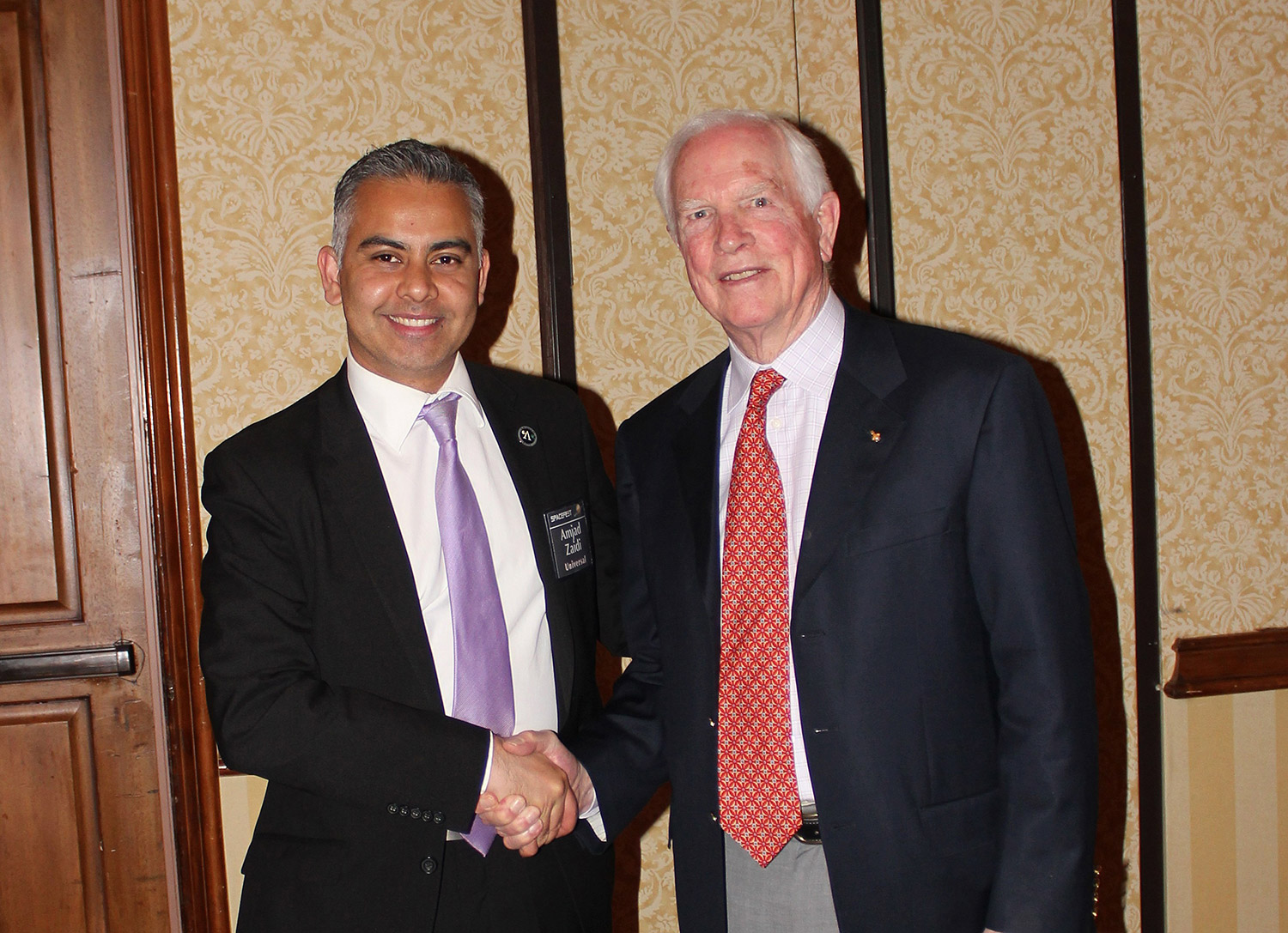
Al Bean: One of the nicest men I have ever met, period. So warm open and welcoming with a ready smile, here was an Apollo XII and Skylab III hero without borders or brash ego. At lunch, he correctly surmised that the experience of walking on the Moon simply enhanced the qualities that were already in the men who went there. Whether it was to run for Senate (Jack Schmitt), actively pursue plans for Mars (Buzz Aldrin), find renewed strength and meaning in their religion (Charlie Duke) or enhance an artist’s world (Al Bean himself). Talking to him about his painting experiences we were all surprised at how he has never looked again at the Moon while painting it. It’s all from memory and impressions. Exactness and the pride in a painting well finished is his driver and he could take 4-6 months over perfecting one. To him, it is simply a transfer of exacting rigour from being a navy pilot, to a test pilot, astronaut and now a painter. An inspiring lesson we can apply to our lives. We are never static, we adapt and reinvent ourselves periodically to survive and eventually excel – and if we are lucky become closer to who we truly are. The trick is to instil excellence and exactitude in everything we do and have fun doing it, just like Al Bean said.
The day was rounded off by a remarkable and eminent teaming up of Carolyn Porco and Professor Brian Cox (British astrophysicist and current king of BBC science promotion). Both gave a detailed talk on their respective fields and neither dumbed down for this crowd. Carolyn (as expected) stunned us with the latest images from Cassini’s exploration of the Saturnian system. This is truly where scientific observation comes into play as Saturn is in many ways, a micro solar system in itself, with its proto planetary accretion disk analogue (rings). However there is one further thing Saturn provides; beautiful grandeur. Having gazed upon Voyager’s images as a child and now the remarkable high res Cassini photos as an adult, I can safely say we truly have a Wonder of the Solar System in our “back garden”. Carolyn’s photos of Titan and Enceladus wowed the crowd, including some at the time hitherto unpublished data and unpublished plans. One of which has since come to fruition during the #DayEarthSmiled / #WaveAtSaturn events on Friday 19th July 2013, when for only the 3rd time in history, the Pale Blue Dot of Earth was photographed by Cassini’s cameras from 1.44 billion kilometres away.
Brian Cox stepped up the pace and instead of concentrating on a wonder of our Solar System, spoke about the Wonders of our Universe. Not to be outdone, he told us about his work on the Large Hadron Collider and related complex astrophysics principles with everything that we are and know in nature and cosmology today, from the Big Bang theory to cosmic Inflation, dark energy, dark matter and cosmic microwave background radiation. He finished with a deep and meaningful thought (as he is known to do) quoting the Royal Institution of Great Britain;
“It is an undoubted truth, that the successive improvements in the condition of man, from a state of ignorance and barbarism to that of the highest cultivation and refinement are usually affected by the aid of machinery in procuring the necessaries, the comforts, and the elegancies of life; and that the pre-eminence of any people in civilisation, is and ought ever to be estimated by the state of industry and mechanical improvement among them.”
Spacefest V: Day 2
Day 2’s lectures started off with a bang for me as I sat in on a great talk from one of my literary heroes; Andrew Chaikin. Andrew wrote what is considered to be the cornerstone “go-to” text for anyone who wants to know anything about the US Space Program to the end of the Apollo Program. His book “A Man on the Moon” took 8 years to write with meticulous research from interviews with many involved in that era. Andrew spoke about the political context which fired JFK’s “we choose to go to the Moon” speech. He then spoke about the exciting age we live in and the rise of “commercial” spaceflight enterprises. From its earliest beginnings, commercial spaceflight is rapidly becoming a growing industry with new players arriving on the scene (Virgin Galactic, XCor, SpaceX, Orbital Sciences, Sierra Nevada etc.). Past it seems is indeed prologue.
At lunch, we talked more about Golden Spike and the race back to the Moon. The time is ripe for a commercial return and Andrew outlined his involvement with Golden Spike; a “railroad” firm with the goal of establishing the first commercial transportation service to the surface of the Moon, using existing technology, leveraging Apollo experience and offering these at prices comparable to robotic missions to a wide variety of customers. With the famed Jim Lovell and Gerry Griffin already on board Golden Spike is on course to lay a new railroad for a permanent lunar return.
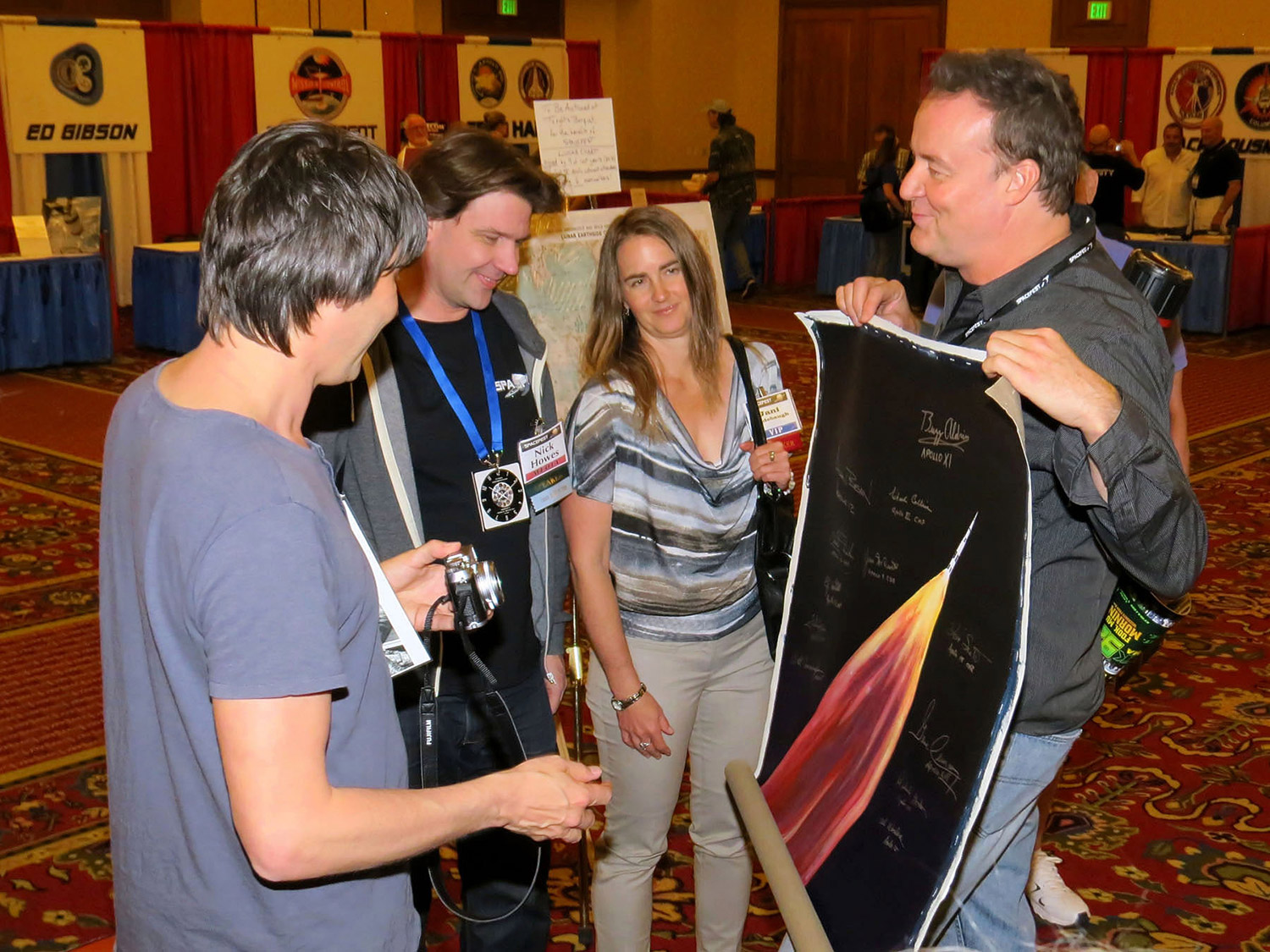
Phil Plait (@badastronomer) the renowned blogger, astronomer and science author, packed out his room with his usual mix of humour and logical truth deconstructing pseudo-science. He also shared the wonder of science outreach and how the general public can be inspired, as they were during MSL Curiosity’s remarkably successful but dramatic landing on Mars. Who can forget Times Square in New York, filled to the brim with people of all backgrounds watching as a 1 ton NASA rover landed LIVE on TV ON ANOTHER WORLD! And that was but one landing party for Curiosity as there were so many around the world. As Phil rightly said this was one of the most outstanding moments of his and our lives.
Popping back to the dealer room I introduced myself to Fred Haise. Fred was one of the Apollo XIII crew and Enterprise Shuttle commander/ test pilot during the earliest days of the Shuttle program in the late 70s. Here was another man who was still sharp as a tack and energised. His role as a STEM ambassador and educator has inspired many. We talked about his dedication to completing the Infinity Science Centre in Mississippi, a centre of learning with interactive exhibits for children and adults alike. Fred truly understands the need to inspire and educate the children of today to follow STEM subjects. They are the engineers and scientists of tomorrow and without them, our ability to innovate and progress will diminish.
Dan Durda: Another renaissance man who regaled me with talks of his work with XCor Aerospace. He gave a sparkling talk on his flying jets and booking flights on Virgin Galactic’s SpaceShipTwo and XCor’s Lynx as a payload specialist primarily to do science. However the largest portion of his talk was around comets and asteroids. Given the recent pass of Asteroid DA14 and the Chelyabinsk meteorite strike his talk generated much interest. With over 20 years of experience in the field of collisional and dynamical evolution of Near Earth and Kuiper Belt objects, Dan outlined the reason for the Sentinel Mission. The Sentinel Mission is the brainchild of Rusty Schweickart’s B612 Foundation offering the public a chance to fund a privately owned and operated mission to launch an infrared telescope in a solar orbit. This telescope will track and map asteroids and other NEOs (Near Earth Objects) that prove a danger to our planet. Suffice to say the timing of this mission could not be better given rising public awareness that we live in a cosmic shooting gallery. To find out more about B612’s proposal visit http://b612foundation.org/sentinelmission/.
Britney Schmidt: A post-doctoral astrobiologist in the Planetary Science field, Britney gave fascinating insights into a mission to Europa, one of Jupiter’s most exciting satellites with the promise of extremophile life existing there. She spoke about how the orbit of Io and Jupiter’s own immense magnetic field, has huge bearing on Europa itself giving it tidal energy. Understanding Earth’s geological cycles also helps us create an analogue for Europa’s ecosystem too. Britney then laid out a compelling case for visiting Europa; thanks to its warm salty oceans and high energy, the mediums are there for extremophile life to exist, perhaps in a proto state. You can view more about her proposed mission at www.europa.seti.org.
What followed later that evening was quite possibly the most emotional moment of my life, next to being present at the final Shuttle launch. A simple photo opportunity with childhood heroes, many of whose lives and lunar missions through NASA I have followed and read about time after time while growing up. To be sharing a picture with them was the proudest and most epic memory from that event.
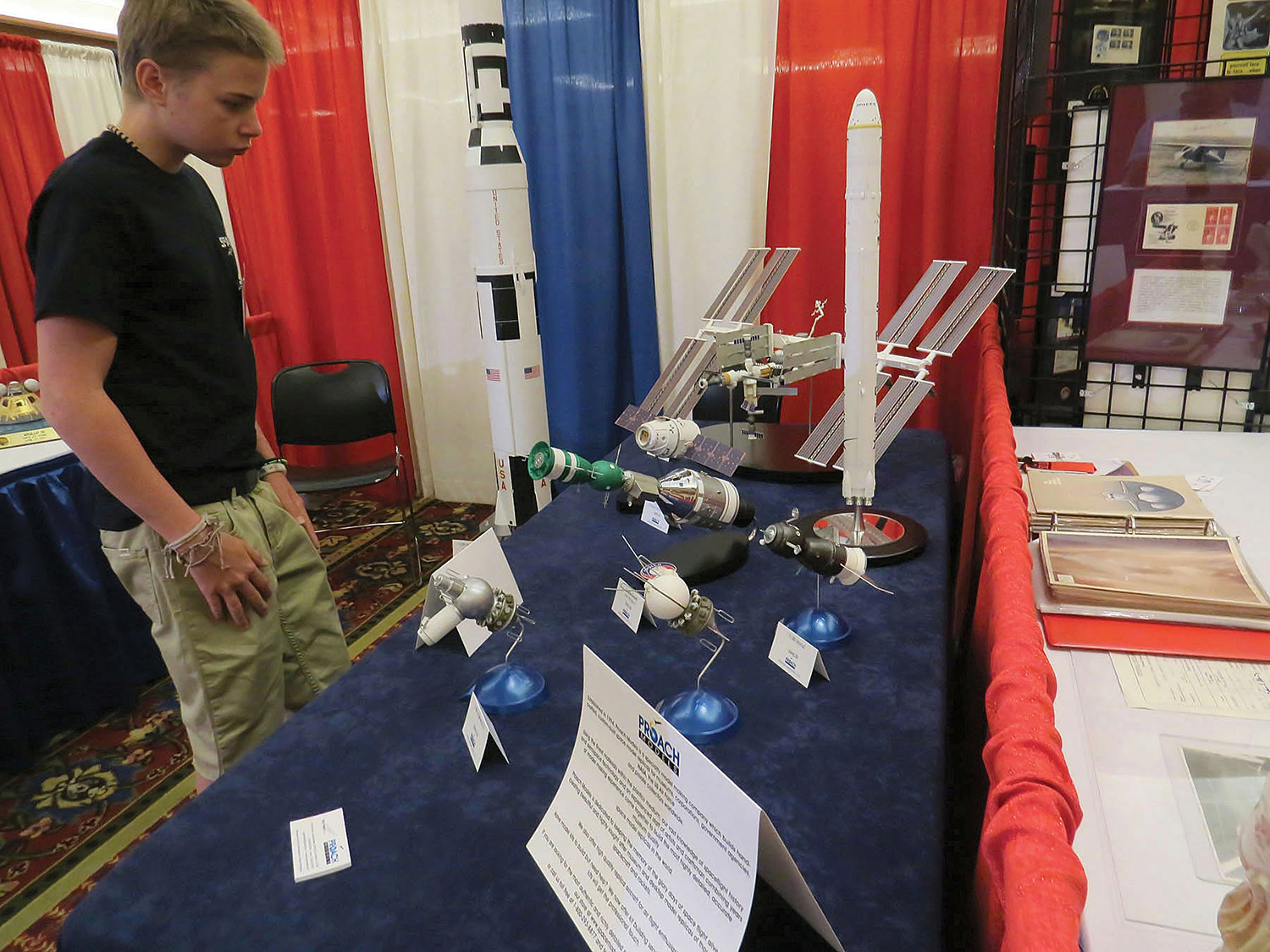
The Spacefest V Banquet followed with many of my friends being seated with and chatting away with these legends. My choice; Dave Scott. Dave was most notably Commander of Apollo XV, the first “J” mission and the first to stay on the Moon for 3 days delivering a truly magnificent scientific mission. But that was not his only mission, he flew side seat in the almost disastrous Gemini VIII alongside one Neil Armstrong and was a key part of Apollo X. Dave became the first off world driver on Apollo XV as he demonstrated with the famous lunar rover. He remarked at dinner that “that car kicked like a mule” over the rocks and took forever to come back down, before being bounced up in the air again. We also talked at length about his interest for geology, which under the tutelage of Professor Lee Silver grew into a passion for the benefit of Apollo XV’s mission. Dave actively campaigned against Deke Slayton’s (then head of the Astronaut Office) misgivings to trade abort propellant on the descent stage of the Lunar Module for a telephoto lens! Clearly Dave realised the scientific value of where he was going. He also remembered my gift to him the previous day of Captain Cook’s journals and was already enjoying reading them greatly.
Dave also told my banquet table how he and James Irwin discovered a chunk of the Moon’s original crust. Later called “The Genesis Rock” it helped transform our theoretical understanding of how the Moon was formed. Our table also included a group of Swiss schoolchildren who come to Spacefest every year. They were clearly engaged and asking many intelligent and mature questions of Dave about the nature of the Universe, the Moon, his experiences on it and the Earth itself. It felt like a torch was being passed to the future. What was clear was how engaged Dave was in inspiring children to take up STEM subjects and study hard. Who knows, perhaps among them, and many others like them would be the first human to return to the Moon or set foot on Mars…
During the banquet was perhaps the most touching moment of the night for me. On the 51st anniversary of his Aurora VII Mercury flight, Scott Carpenter was given a rousing dedication and standing ovation. As one of the astronauts left alive today from that pioneering program, he showed true courage as a test pilot during his one and only mission.
Latter day critics have claimed he almost exhausted his propellant forcing an early mission abort and re-entry, but I believe the data from his flight was invaluable and informed every subsequent US mission: that back-up systems (human pilots) could correct and compensate for technological failures.
This was a touching moment for an elderly and frail legend, which brings home how many of these legends are left in the world today.
Spacefest V: Day 3
Feeling the effects of the 2 previous days, many of us “Spacefesters” were flagging but dragged ourselves down for breakfast, sitting with any number of astronauts, scientists and speakers we liked. This was the greatest thing about this event. No egos, no cliques, just people with a passion for space, science and astronomy intermingling and chatting about their favourite passions, whether they are a Moonwalker or a schoolchild.
So straight after breakfast it was onto the Apollo Moon Panel with a full and frank discussion of the Apollo program, its successes and failures and most of all, its legacy. Most of the key astronauts of that era were in attendance. With Professor Brian Cox moderating the Q&A it was clear that he was one of us – giddy with excitement at even spending 5 minutes with these living legends.
The panel included Walt Cunningham (Apollo VII), Jim McDivitt (Gemini IV and Apollo IX), Dick Gordon (Gemini XI and Apollo XII), Fred Haise (Apollo XIII and Shuttle Enterprise ALT) and Bruce McCandless (Shuttle missions STS-41B and STS-31). With such minds on board, it was a glimpse into history and a bygone era where we truly took risks, faced great dangers but also experienced the greatest rewards bestowed upon humanity. There was also a lot of good natured ribbing among the Apollo guys as they reminisced about the heady days of the 60’s but took pains to inspire and encourage the schoolchildren in attendance.
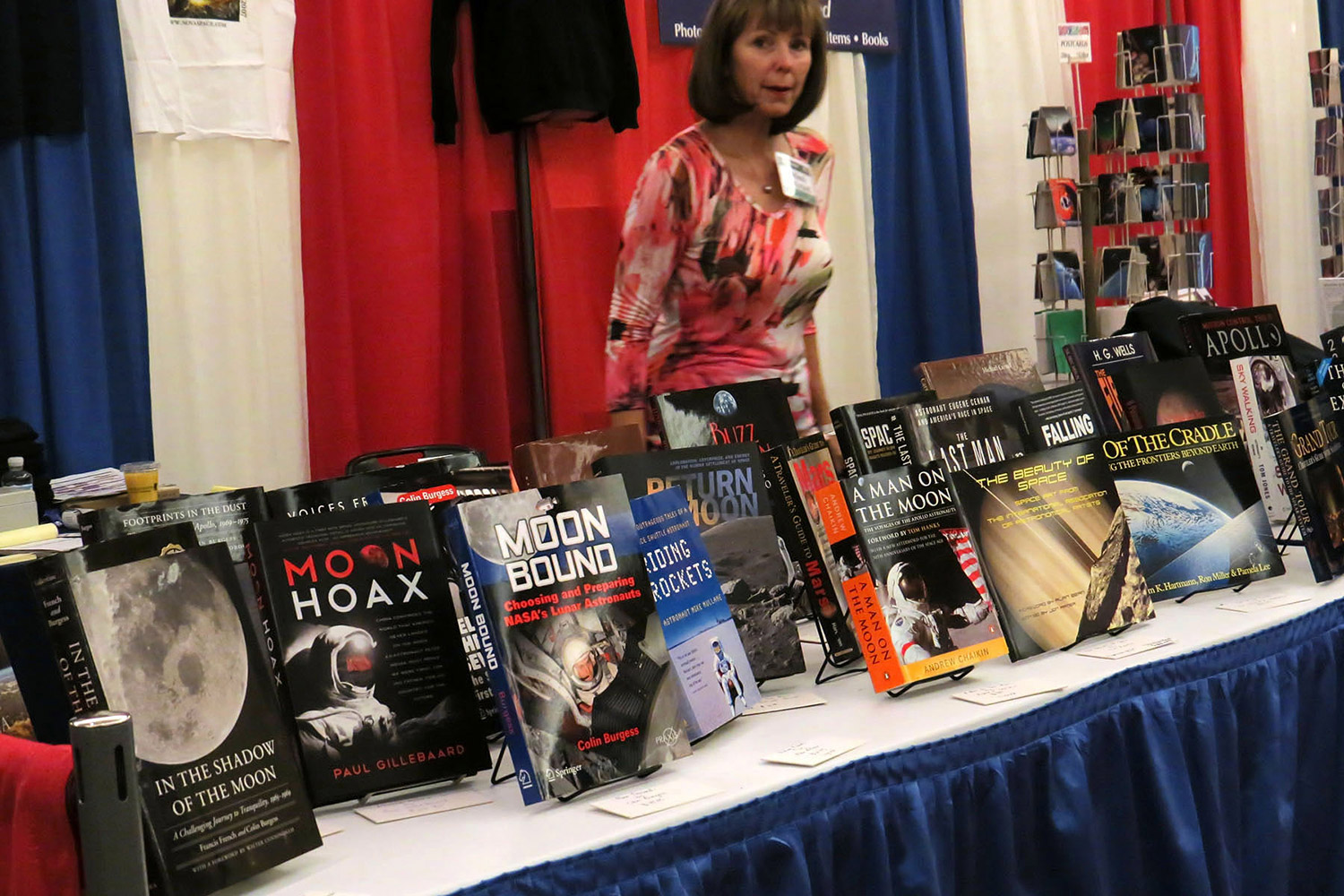
After the panel discussion, a return to the dealer room led to the most momentous meeting with Gene Cernan. As commander of Apollo XVII, LMP on Apollo X and flew the right hand seat on Gemini IX (with Tom Stafford), this man was well trained and a capable scientist on the Moon for 3 full days. Like Dave Scott he is an explorer and it is clear that since his return his fervour for exploration has only increased. Gene is a special man and one of the earliest and most powerful Space and STEM outreach ambassadors. He took time with everyone to meet, greet and talk to them fully. Even for me, an old kid from London he wanted to hear about what drove my passion to be here. He even recorded a unique video message for my three young nephews back home.
Scott Carpenter. I never thought I would get a chance to meet one of the original heroes of the Mercury program. For anyone in love with that era, this was when NASA was in its infancy. Taking teetering steps forward before falling to the ground and picking themselves up again. Everything was new, had to be invented or wasn’t even conceived of yet. Carpenter himself had appeared weak due to age all weekend and his frailty had not escaped me. I was feeling very guilty about asking to meet him. Physical frailty is one thing, mental agility is another. This man is still sharp as a tack. He pronounced my name perfectly, then stopped me dead in my tracks querying if it was of Farsi origin. Not many people would even know of Farsi and while I may not be, the fact that this astronaut from the 60s asked about it astounded me. A well-travelled and learned man.
By this time only the few dedicated stragglers of Spacefest remained. Wandering around the exhibition hall I couldn’t help but pick out a few giclee art mementoes alongside some other “swag”. Meeting Brian Cox again, we talked about his next BBC show which is starting to take shape. We also discussed at length the state of manned US space program, how we can improve science outreach to the public to make them more aware of the wider world of science and how much their lives depend on space activities. Soon enough, as I knew it would the moment had arrived to bid farewell to a very special group of friends as we parted ways. It was clear that for many of us this had been a life changing experience.
A dash back for the final talk was delivered by good friend Nick Howes, UK’s own outreach dynamo, comet hunter and Faulkes Telescope Pro-AM manager. Nick related how the effect of news reporting over the discovery of Comet C2007Q3 changed his life. The incredible sighting and break-up of the comet while it was being captured led to a media frenzy and brought his work to the attention of many, opening up the chance to work with NASA, ESA, and the LARI program with the famed Lowell Observatory in Flagstaff. But the real icing on the cake was his work on Project Snoopy, the on-going hunt for Apollo X’s Lunar Module Ascent Stage, which was sent off into orbit around the sun and is still out there somewhere. Engaging again with school students to look for this speck among the stars is a huge challenge but an exciting one. Even Gene Cernan, LMP of Apollo X is firmly on board with finding his little ship again. Learn more about The Search for Snoopy here! http://www.faulkes-telescope.com/news/2413.
The epiphany moment…
Personally, I had a strong feeling this would happen since having to give up my seat to Spacefest IV last year. Everything since had been building to these 3 days in Tucson. Research, meticulous planning and significant investment had gone into not only getting me here but to make this the most epic space themed holiday ever.
It is sobering to know that we live in an age where soon there will be no more humans who can share the experience of having walked on another world. It is even more saddening to know that there are some who doubt this recent history, and I personally make it my mission to inform and educate others of this, the most remarkable achievement in all of human history. Consider this: there are 7 billion people alive today on our Pale Blue Dot, of which only 12 actually walked on the surface of another world in those heady days of the late 60s and early 70s. Of those 12, only 8 remain alive today to tell the tale which was reminded to us by the early passing of the first man on the Moon, Neil Armstrong last year.
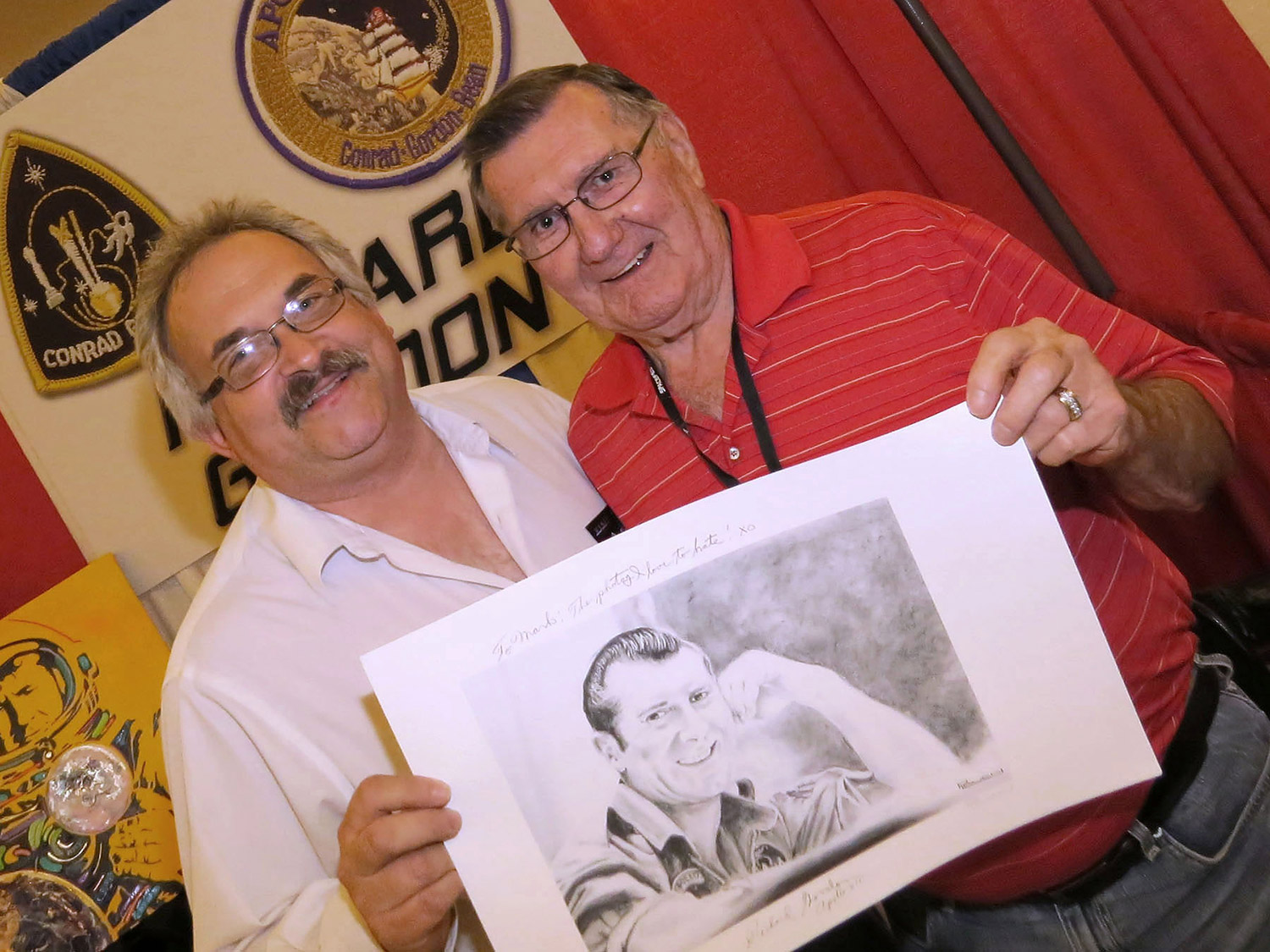
The unexpected dimension was sharing this all with a wonderful group of global space friends. It’s no surprise then than that this trip has energised us to do more, to reap what has been sown. Having met such legendary people I am firmly of the opinion that it is up to each and every one of us to change the world for the better, through raising awareness of STEM education and space exploration. These impinge on everyone’s lives on a daily basis. We can simply choose to take a passive backseat role in our future and not invest in STEM education, or support it actively, any way we can. Firing children’s and adults imaginations, through education and inspiration, reigniting their natural human curiosity will be the way forward to all our futures. To create the next generation of leaders, scientists, engineers and astronauts of tomorrow. To build a better world for our progeny and finally a move towards being a multi planetary species.
Many of us have now returned back to a life where the vagaries and troubles of an ordinary world await to grasp at our energies. Home. It must take on a new meaning for me. It’s not what I’ve returned to. It’s not a place, city, or date in time. To me, it’s a state of mind. Home is with the friends and “space family” I met and made who share my belief in building a better world; bridging today to tomorrow’s world and humanity’s manifest destiny in space. Home is the journey to that bright tomorrow. Home is with an army of visionaries. We are virtual. We are global. We are legion. And our home is ahead and above us. Humanity’s manifest destiny in space awaits.
It truly does seem that Spacefest has shown us that past is prologue.

